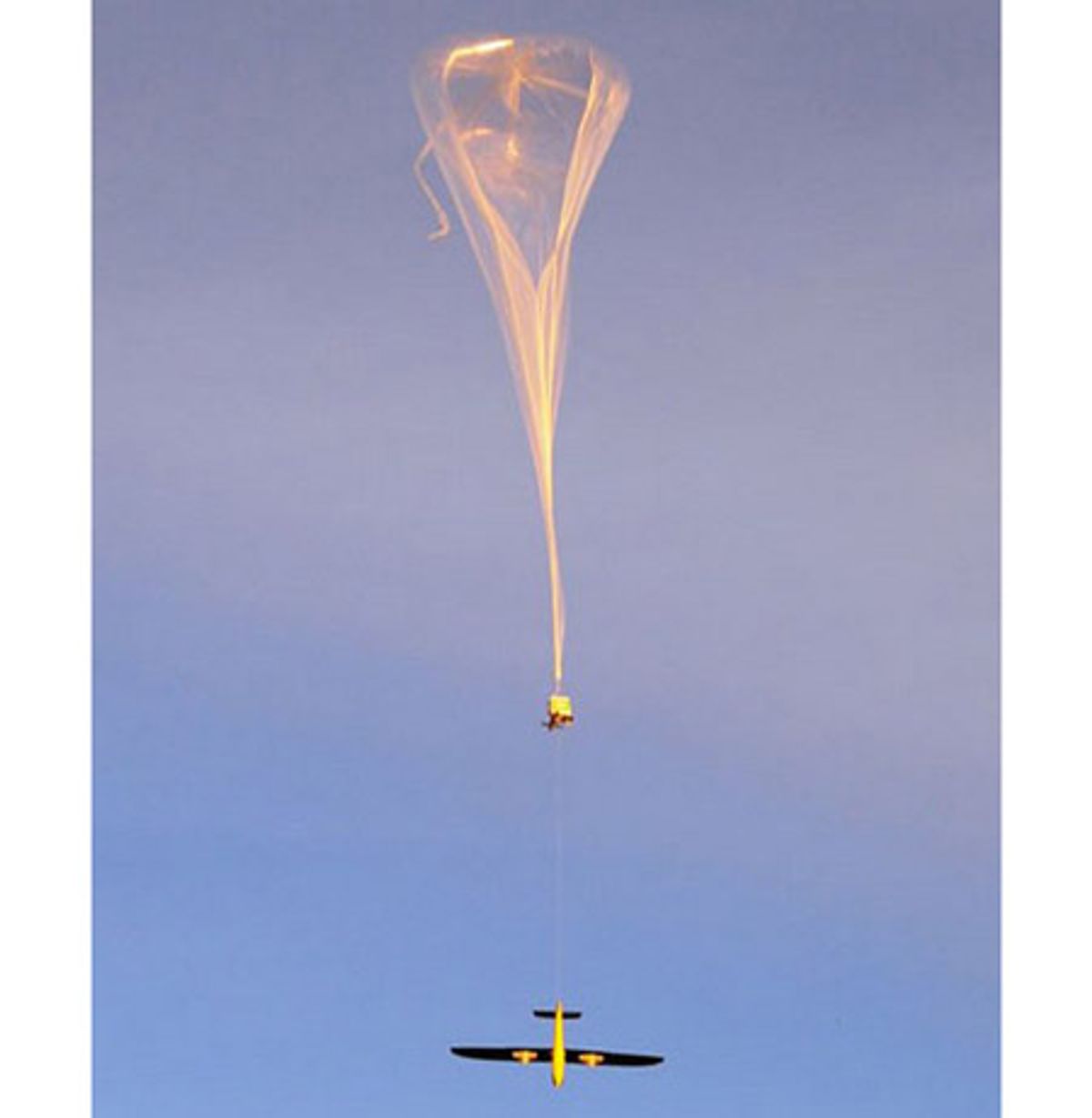A few years ago when we visited AUVSI, the big conference organized by the Association for Unmanned Vehicle Systems International, we took a look at some of the vaguely nutty ways that UAVs are landed. Launching is generally more straightforward, unless you need to be stealthy about it, which is why the U.S. Navy is looking to submerged submarines and high-altitude balloons to deliver drones.
Drones launched from subs is a fairly obvious good idea for over-the-horizon reconnaissance, but making it happen is tricky. Drones tend to be small, relatively fragile little things that don't react well to being dumped out of a submarine into the ocean, so Raytheon had to get clever. They've developed a canister that can be flushed out of a sub's trash disposal unit of all places, and inside is a UAV, all snug and warm and dry. The canister gradually floats to the surface, orients itself, and the UAV gets ejected up and out and goes on its merry way. The UAV inside the canister is AeroVironment's Switchblade, which, with its small size and nifty folding wings, is perfect for the job.
So that's one way of stealthily deploying a drone, but an even wilder way is by using a high-altitude weather balloon with a drone stapled to it, with drones stapled to it. Nope, that's not a typo: The Naval Research Laboratory has been using weather balloons to carry a medium-sized Tempest UAV up to 60,000 feet, and the Tempest UAV itself is carrying a pair of tiny little CICADA (Close-In Covert Autonomous Disposable Aircraft ) drones underneath its wings. Look:
The Tempest can travel up to 30 miles and deploy the CICADAs as gliders, which can then land within 15 feet of their target coordinates. Each CICADA can carry a variety of sensor payloads, and as the name implies, they're designed to be cheap and disposable: The airframe is actually just a custom printed circuit board.
This balloon launch multi-drone thing in particular is very cool, since whatever you attach to the balloon can use its engine purely for range as opposed to altitude. And dropping off these little microdrones to get in and do the dirty work saves a bunch of money and adds that much more versatility to the entire system.
[ NRL ] via [ Aviation Week ]
Evan Ackerman is a senior editor at IEEE Spectrum. Since 2007, he has written over 6,000 articles on robotics and technology. He has a degree in Martian geology and is excellent at playing bagpipes.







